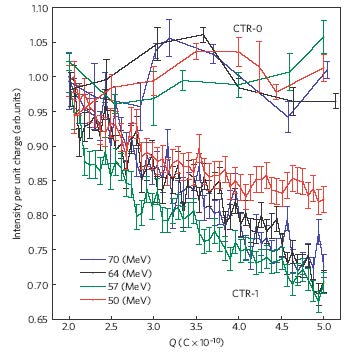- Home
- Capabilities
- Science Highlights
- Operations
- Publications
-
ES&H
- Experiment Start-up
- Laser Safety
Collider-Accelerator Dept.
- C-AD ES&H Resources
- Staff
- Users' Place
- Apply for Access
Shot Noise Suppression
The electron beam shot noise is a direct consequence of the Poisson statistics of random particle distribution, and therefore, is widely considered to be an absolute limit for the uniformity of the particle ensemble. For the practical example of RF Linac’s, it usually is assumed that collective inter-particle interaction is negligible during the beams’ acceleration and transport, and local charge fluctuations are measured by shot noise as defined by Poisson statistics. However, for high quality cold and intense accelerated electron beams originating from photocathode guns, neglecting the effects of collective micro dynamic interactions in the electron transport no longer are justified. The trend towards expansion of a dense bunch would tend to homogenize the charge distribution of the initially cold electron beam plasma. The observation of current shot noise suppression at optical frequencies is of interest from both the point-of-view of fundamental physics and applications.
The experiment conducted at the ATF provided convincing demonstration that at optical frequencies, at least, this limit may be surpassed owing to Coulomb collective interaction. This was found by measuring the OTR intensity normalized to the bunch charge (See figure 1). A reduction in this intensity upon propagating the electron beam indicates the beam’s homogenization. The demonstrated noise suppression at optical frequencies is four orders-of magnitude higher than was achieved previously at microwave wavelengths.

Figure 1. Integrated OTR intensity measurement signals divided by the electron pulse charge

Figure 2. Random distribution in an electron beam, as viewed in the beam’s reference frame.
The ATF result paves the path towards improving beam parameters important for X-ray FEL, and is directly applicable to LCLS’s performance.
Avraham Gover, Ariel Nause, Egor Dyunin & Mikhail Fedurin Beating the Shot-Noise Limit Nature Physics 8, 877–880 (2012)




